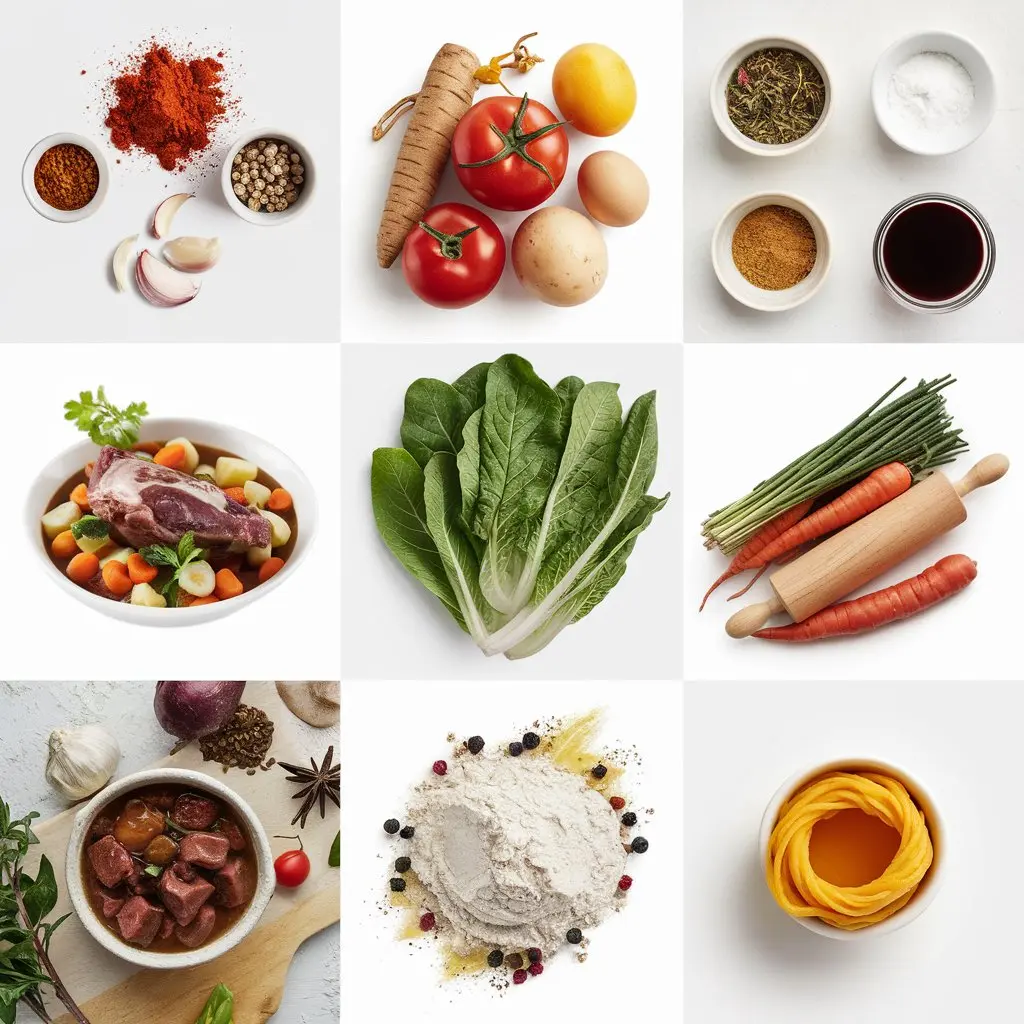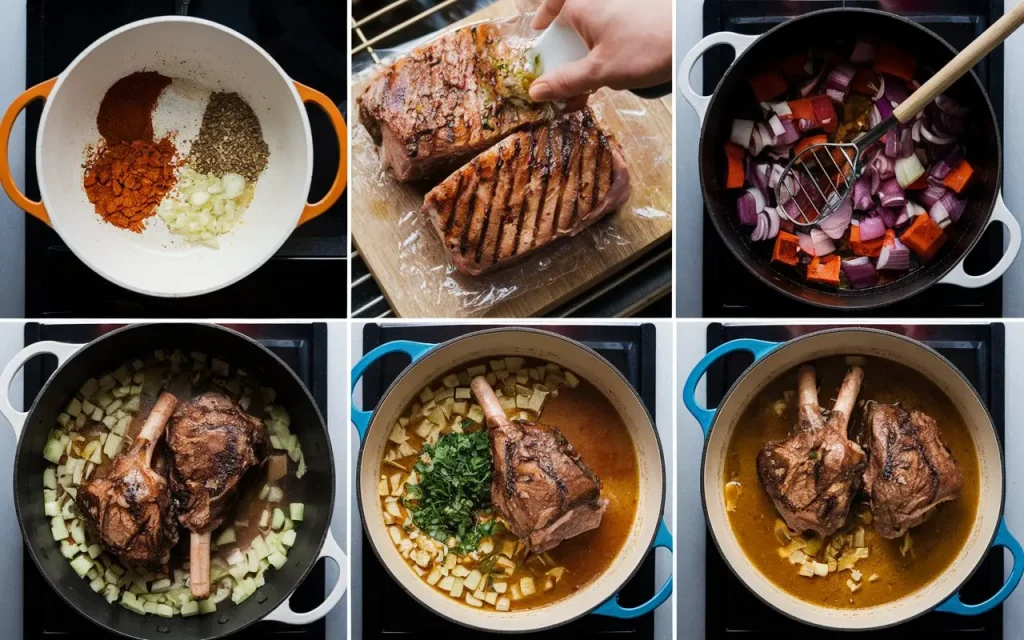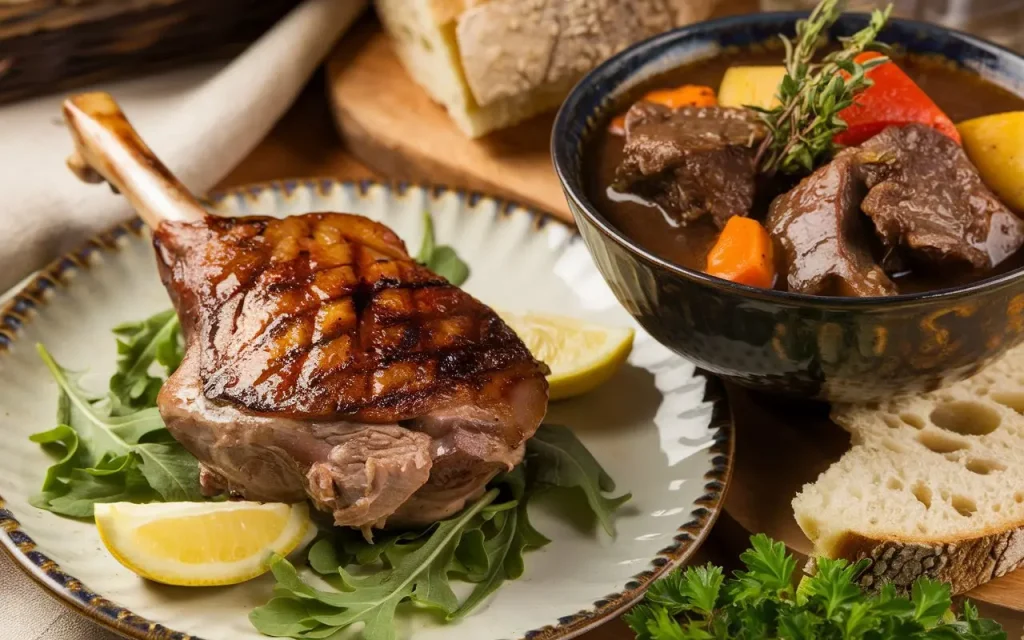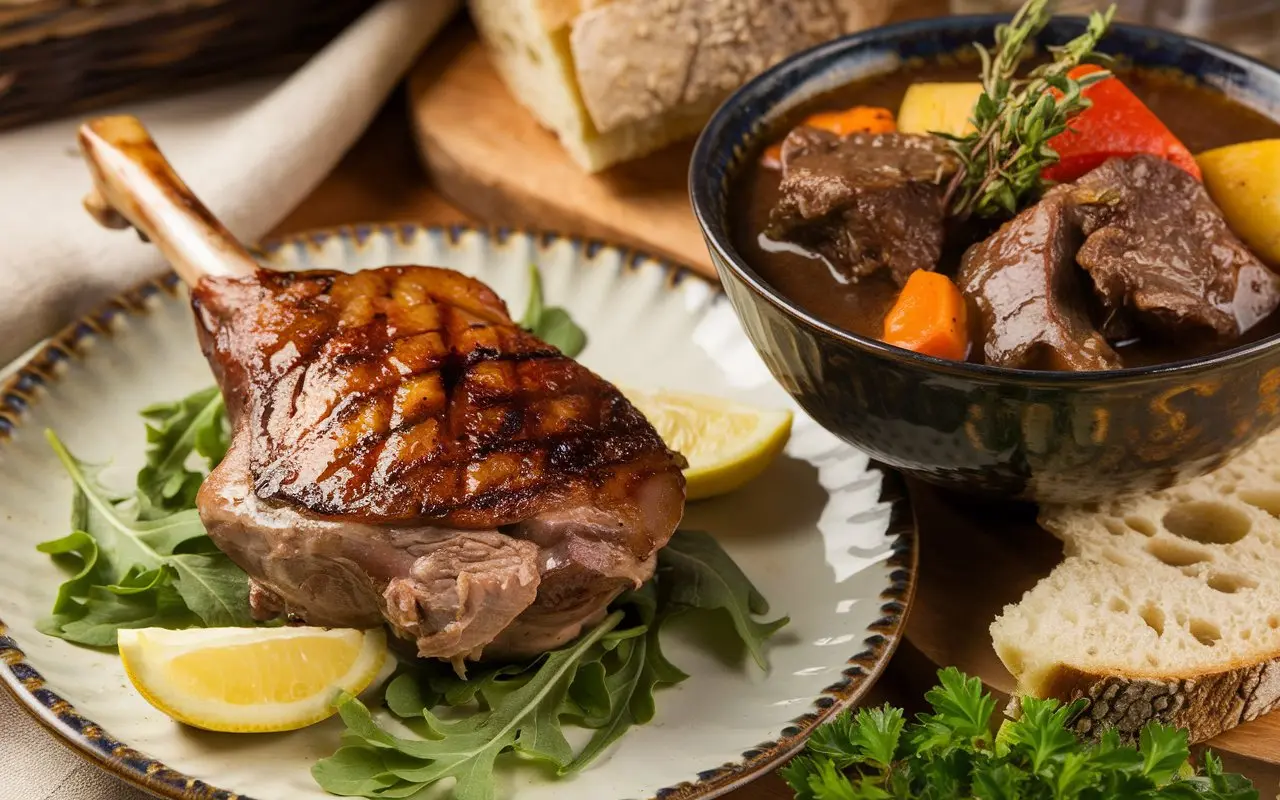Seasoned Hand Cooking: A NYT Culinary Delight
The term “Seasoned Hand” conjures images of culinary wisdom and the mastery that comes with years of experience. In a world where recipes are increasingly precise and accessible, cooking with a Seasoned Hand Cooking stands out because it transcends the rigidity of instructions and steps into a realm that is instinctive, intuitive, and deeply rewarding. This guide will take you through the nuances of what it means to cook like a seasoned hand, exploring everything from cultural inspirations to specific techniques.
We will dive deep into the elements that define a seasoned cook, explore signature recipes, understand the art of spice blending, and highlight how the wisdom gained through experience can elevate simple ingredients into spectacular dishes.
Table of Contents
- What is “Seasoned Hand”?
- History and Influence
- Techniques of a Seasoned Hand in the Kitchen
- Signature Recipes
- Spicy Grilled Chicken
- Classic Beef Stew with Herbs
- Slow-Cooked Lamb Shanks
- Spice Combinations that Define a Seasoned Hand
- Ingredient Selection – The Foundation of Great Cooking
- Cultural Influences in Seasoned Cooking
- The Role of Experience in Flavor Development
- Tips to Master the Techniques of a Seasoned Cook
- Internal Linking Opportunities for Further Reading
- Conclusion
1. What is “Seasoned Hand”?
“Seasoned Hand” refers to a level of skill and experience in the culinary arts where cooking is no longer confined by strict recipes and steps. Instead, it is governed by intuition, creativity, and a profound understanding of ingredients. The seasoned hand is evident when a cook can modify recipes on the fly based on available ingredients, taste as they go, and bring harmony to flavors with little more than a gut feeling.
For instance, while some cooks may precisely measure spices, a seasoned cook might instead instinctively sprinkle just the right amount of paprika or thyme, knowing exactly how these elements work together. If you wish to learn how to master some of these instinctual cooking techniques, consider visiting The Ultimate Guide to Making Spicy Chips at Home, which focuses on balancing spices and heat.
2. History and Influence
Cooking with a seasoned hand has evolved through centuries of trial and error, intuition, and tradition. Traditionally, cooking knowledge was handed down through generations, often by watching and learning in the family kitchen. Unlike today, when cookbooks and the internet provide detailed instructions, cooks of the past relied on the wisdom they gathered over years of practice.
In the articles and columns published by The New York Times (NYT), there are several stories that talk about such generational knowledge. These stories emphasize how cooking traditions help families retain cultural roots and highlight the evolving nature of recipes as they get passed down. Moreover, the emphasis on cooking without fixed recipes can be seen in features on traditional foods where quantities are described in terms like “a pinch of this” or “enough until it tastes right.”
To further understand comfort food recipes that carry this kind of seasoned wisdom, you can read our detailed guide on Potatoes & Mushrooms in Cream Sauce: Hearty Comfort Food.
3. Techniques of a Seasoned Hand in the Kitchen
There are several distinct techniques that a seasoned hand often employs, from understanding the perfect sear on meat to instinctively knowing when bread dough is ready for baking. Some essential techniques include:
Balancing Flavors by Taste
One of the hallmarks of a seasoned cook is the ability to taste a dish and know what it needs. This process involves recognizing flavor imbalances—be it acidity, salt, sweetness, or bitterness—and adjusting them accordingly. For instance, if a tomato-based sauce is too acidic, a seasoned cook might add a dash of sugar to balance it out.
The Perfect Sear
To achieve the right caramelization on meat, a seasoned hand knows the value of proper heat. The Maillard reaction, which gives meat that desirable crust, occurs when the surface reaches the ideal temperature. Overcrowding a pan, for instance, prevents the proper browning and instead leads to steaming—a mistake most seasoned cooks learn to avoid early on.
For more on achieving perfect sears and browning techniques, you can look into Air Fryer Steak Bites.
Layering Spices Throughout Cooking
Rather than seasoning only at the beginning or end, a seasoned cook layers in flavors at every step. Adding salt to sautéed onions helps draw out moisture, while finishing with a sprinkle of flaky sea salt highlights the natural flavors of a dish.
Another excellent example of spice layering can be found in our Beef Stew Seasoning Recipe, which explains how adding herbs at different stages can create depth in the stew.
4. Signature Recipes of a Seasoned Hand
Spicy Grilled Chicken
Ingredients:
- Chicken thighs (bone-in)
- Paprika, cumin, garlic powder, coriander
- Salt, pepper, olive oil
- Lemon juice
Method:
- Prepare the Marinade: In a large bowl, mix paprika, cumin, coriander, garlic powder, salt, and olive oil to form a paste.
- Marinate the Chicken: Rub this mixture generously onto the chicken thighs, making sure every inch is covered. Let it sit for at least 30 minutes.
- Grill the Chicken: Preheat the grill to medium-high heat. Grill the chicken for about 6-7 minutes on each side until cooked through.
This simple recipe is an embodiment of what it means to be a seasoned cook—adjusting spices according to taste, ensuring proper marination, and knowing when the chicken has reached its succulent best.
For a different take on rich, spicy dishes, try The Ultimate Croissant Sandwich Guide, which offers creative ideas for blending ingredients in exciting new ways.
Classic Beef Stew with Herbs
Ingredients:
- 2 lbs beef chunks (boneless)
- 3 carrots, sliced
- 3 potatoes, diced
- 3 celery sticks, chopped
- 1 onion, chopped
- 4 cups beef broth
- 2 bay leaves, fresh thyme, rosemary
- Worcestershire sauce
Method:
- Brown the Beef: Heat a heavy-bottomed pot, add oil, and brown the beef in batches. Set aside.
- Sauté the Vegetables: In the same pot, add onions, celery, and sauté until translucent. Add the browned beef back into the pot.
- Add Broth and Herbs: Pour in beef broth, add bay leaves, thyme, and rosemary. Cover and let it simmer for 2 hours.

This beef stew perfectly represents how slow cooking allows flavors to meld together. For a healthy variation, you can substitute with our Healthy Protein Chocolate Banana Bread Recipe that uses more wholesome ingredients without compromising on taste.
Slow-Cooked Lamb Shanks
Ingredients:
- 4 lamb shanks
- 1 onion, chopped
- 4 garlic cloves
- 1 cup red wine
- 3 cups chicken stock
- Fresh rosemary and thyme
Method:
- Season and Sear: Generously season lamb shanks with salt and pepper. Sear in a hot pot until browned on all sides.
- Deglaze the Pan: Remove the lamb, then add onion and garlic. Pour in red wine to deglaze, scraping up browned bits from the bottom.
- Slow Cook: Add chicken stock, herbs, and lamb back into the pot. Simmer on low heat for 3-4 hours or until the meat falls off the bone.
5. Spice Combinations that Define a Seasoned Hand
A seasoned cook’s spice rack is akin to an artist’s palette. It is filled with a variety of blends that can elevate any dish.
- Herbs de Provence: This aromatic mixture typically includes thyme, basil, rosemary, and fennel seeds. Perfect for roasting vegetables or seasoning chicken.
- Garam Masala: A North Indian spice blend that includes cumin, coriander, cardamom, and cloves. It adds warmth and depth to curries and stews.
6. Ingredient Selection – The Foundation of Great Cooking
A significant part of cooking like a seasoned hand is ingredient selection. Whether you’re shopping for fresh produce or choosing the perfect cut of meat, understanding what makes an ingredient the best choice can transform your dishes.
- Seasonality: Seasonal ingredients not only taste better but also tend to be less expensive. A seasoned cook knows to use fresh tomatoes in the summer and root vegetables like carrots and beets in the winter.
- Freshness Check: Freshness directly impacts flavor. For vegetables, look for vibrant colors and firm textures. For meat, a deep, rich color and minimal smell are indicators of quality.
To dive deeper into ingredient use, see our Hamburger Green Beans, Tomato, and Potato Casserole, which uses staple ingredients in an ingenious way.

7. Cultural Influences in Seasoned Hand Cooking
Culinary traditions play a significant role in how a seasoned hand evolves. The techniques and flavors we use today are often inspired by practices and customs from different cultures.
- French Cuisine: French cooking places emphasis on techniques like braising and making reductions. Many aspects of French culinary traditions have influenced modern cooking styles, especially sauces and stocks.
- Indian Spices: The art of spice blending is an essential part of Indian cuisine. Each region has its own blend of spices used for specific dishes, and understanding these combinations can greatly enhance a cook’s skills.
For another culturally rich recipe, you can see Authentic Cotijas Taco Shop Recipe, which delves into authentic Mexican flavors.
8. The Role of Experience in Flavor Development
Cooking is a journey, and developing great flavor is all about experience. The best way to learn is to cook frequently, make mistakes, and adapt.
- Layering Flavors: Adding acidity towards the end, such as a squeeze of lemon, can lift a dish that feels too heavy.
- Resting Time: Allowing dishes like stews or roasts to rest after cooking ensures flavors are fully developed.
To understand how resting can enhance flavors, see our Slow-Cooked Million Dollar Chicken Casserole.
9. Tips to Master the Techniques of a Seasoned Hand Cooking
- Knife Skills: Good knife skills are essential for efficiency in the kitchen. The faster you can prep ingredients, the more focus you can put on cooking.
- Experimentation: Don’t be afraid to play around. A seasoned hand is developed by trying new combinations—sometimes it works, sometimes it doesn’t, but each time you learn something new.
For recipes that encourage experimentation, check out Rockfish Recipes for creative ways to cook with seafood.
10. Internal Linking Opportunities for Further Reading
Throughout this article, various internal links provide more in-depth information on specific techniques and recipes. You may want to explore:
- Homemade Pappardelle: A Comprehensive Guide for insight into homemade pasta techniques.
- The Ultimate Rigatoni Recipe for perfecting pasta dishes.
11. Conclusion
A “Seasoned Hand” in the kitchen is developed through practice, experimentation, and a deep understanding of ingredients and techniques. By integrating the lessons of cultural cooking traditions, using quality ingredients, and developing instinctual cooking methods, anyone can become a seasoned cook. We hope this extensive guide encourages you to get hands-on, explore new techniques, and build your culinary intuition.

For more detailed recipes and to enhance your skills further, feel free to check out the linked articles. Happy cooking!

